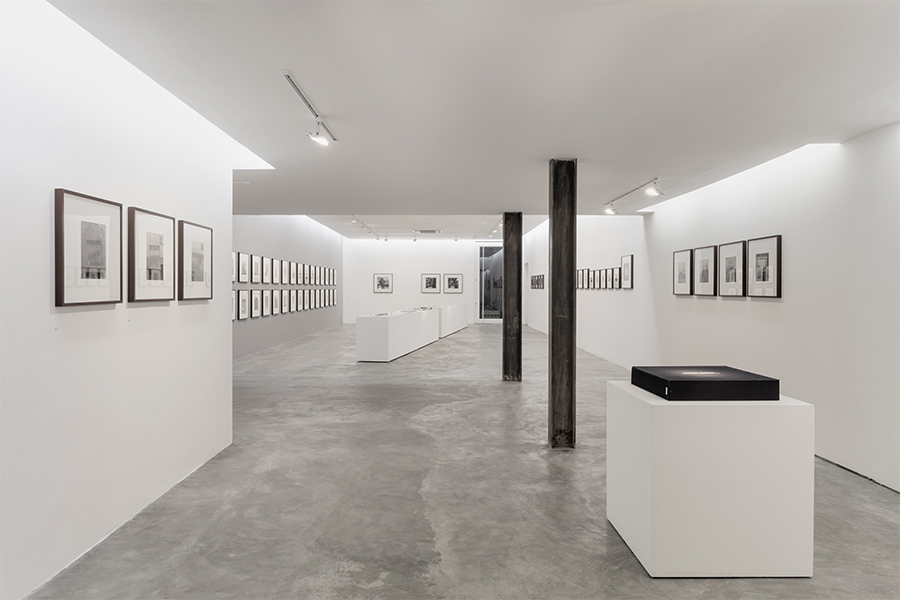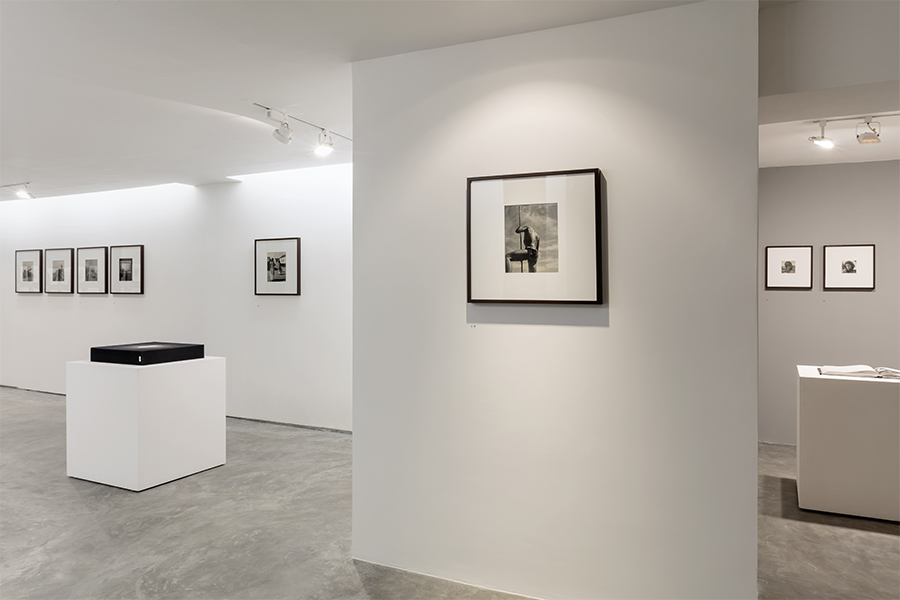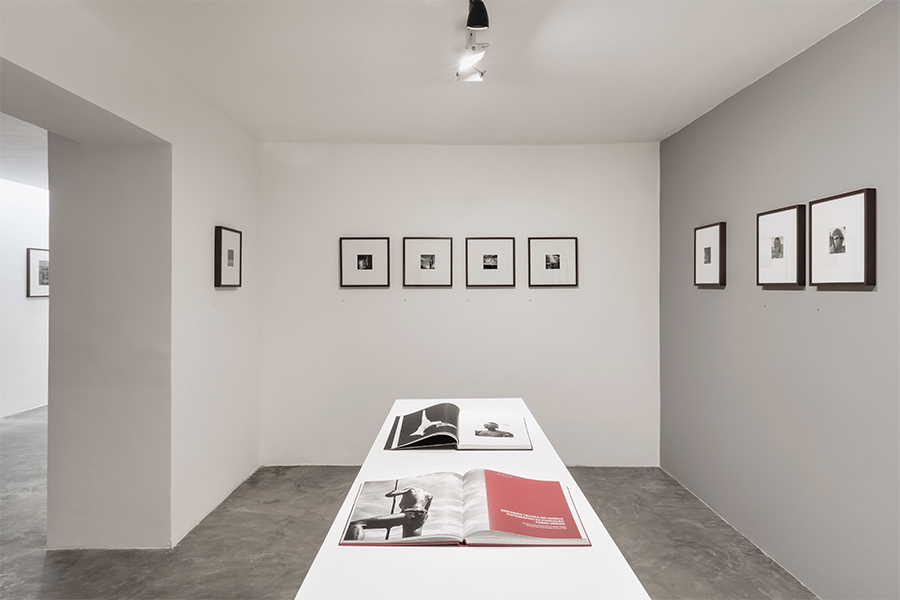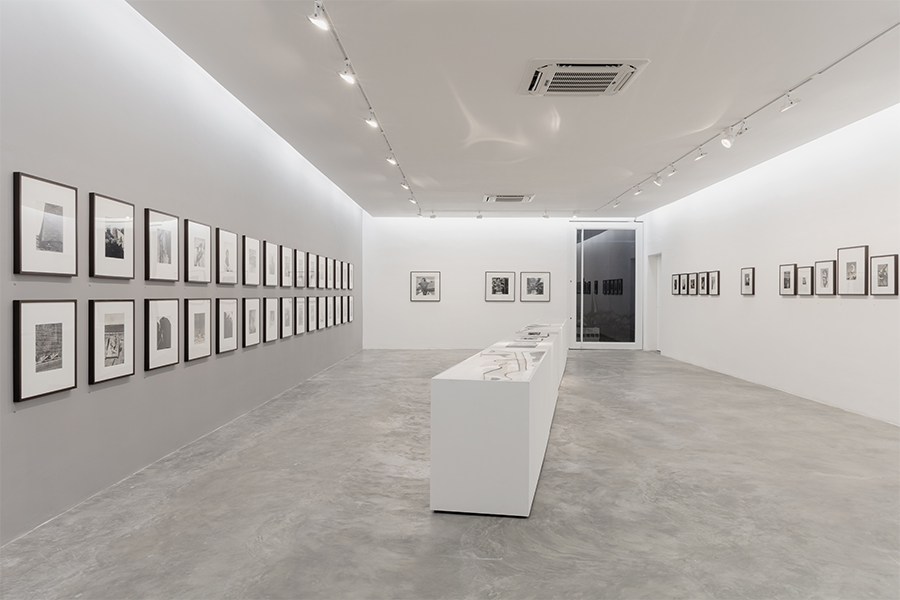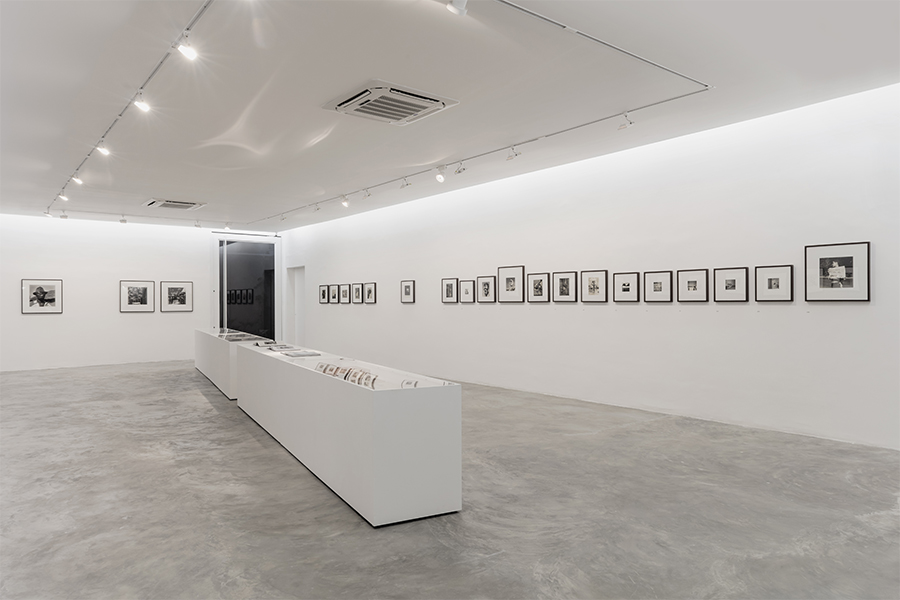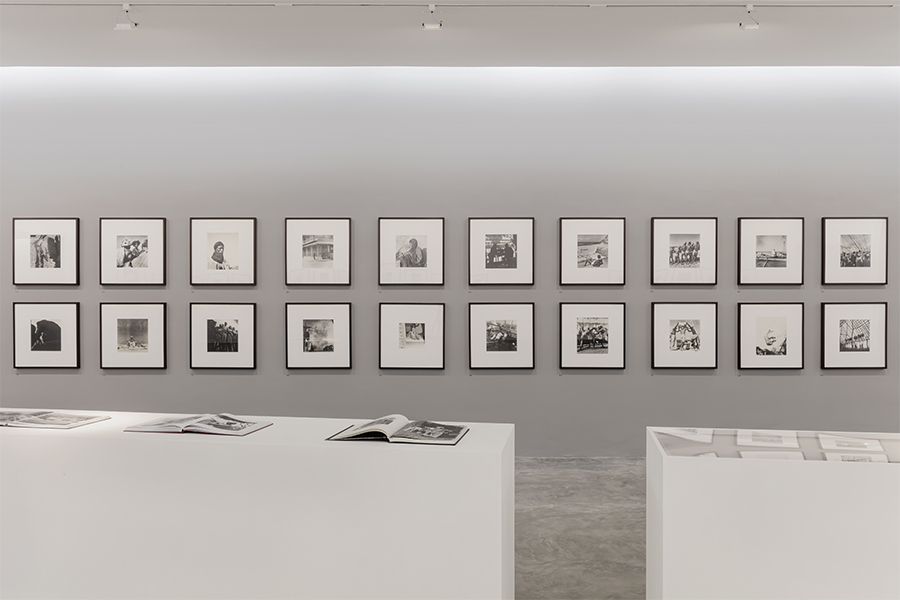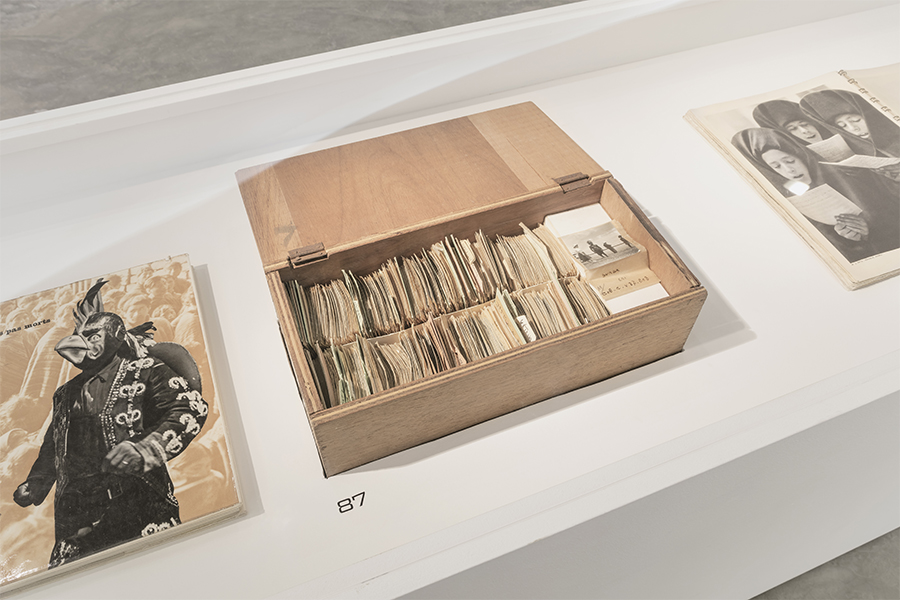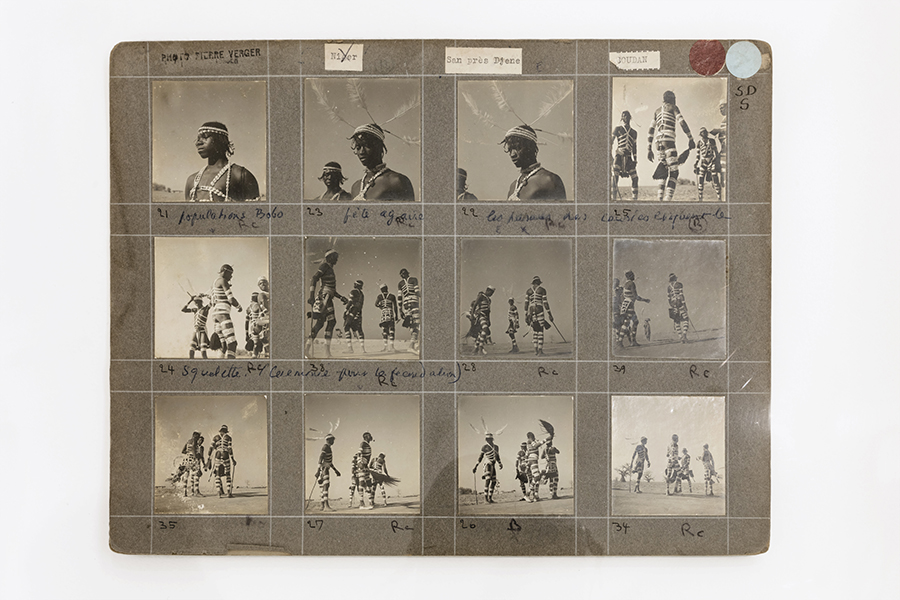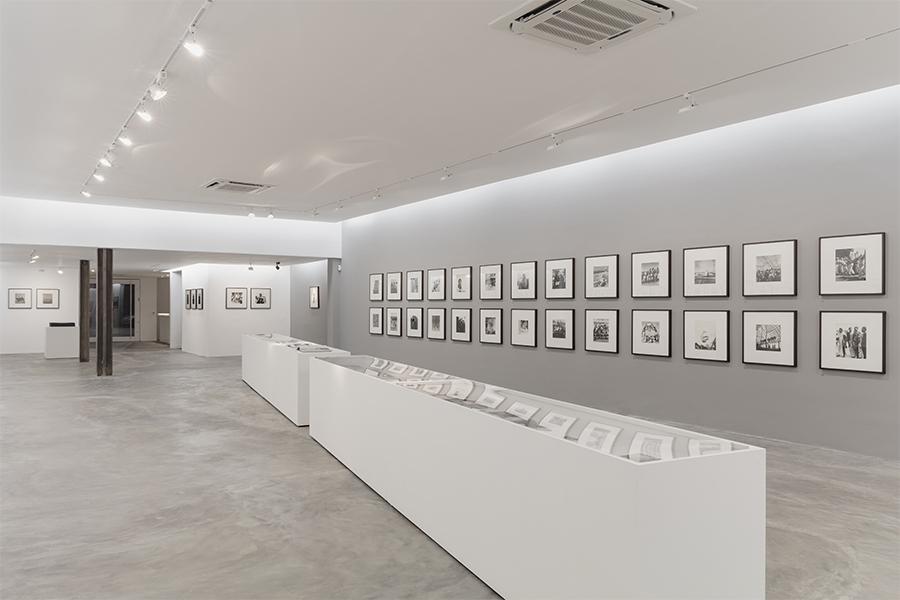PIERRE VERGER
galeria marcelo guarnieri | são paulo
abertura
24.02.2018 / 14h – 18h
período de visitação
24.02 – 04.04.2018
Alameda Lorena, 1835
São Paulo – Brasil
[ mapa ]
A Galeria Marcelo Guarnieri apresenta uma das maiores exposições já montadas em São Paulo do fotógrafo, etnólogo, antropólogo e pesquisador Pierre Verger (1902-1996). A mostra conta com cerca de 120 fotografias que foram feitas entre as décadas de 1930 e 1960 nas diversas viagens que fez pelos cinco continentes, além de publicações e materiais de arquivo como documentos e provas de contato. Os quatro núcleos que organizam a exposição destacam quatro diferentes momentos da produção do fotógrafo, sendo compostos por: fotografias encomendadas por ou vendidas para agências, livros editados pela Editora Corrupio, fotografias produzidas durante suas viagens de pesquisa pela Costa do Benin e Bahia e uma seleção de cópias assinadas que integraram a exposição Pierre Verger, Le Messager organizada pela Revue Noire em 1993 no Musée d’Art d’Afrique et d’Océanie.
O primeiro núcleo apresenta uma seleção do que Verger produziu para importantes agências, jornais e revistas como Alliance-Photo, Magnum, Life e O Cruzeiro, entre os anos de 1932 e 1950. Destacam-se os registros da II Guerra na China, nos quais figuram o cotidiano dos soldados e destroços silenciosos nas cidades de Xangai e Nanquin. Uma das caixas-arquivo que Verger usava para preservar e organizar pequenos envelopes com provas de contato identificadas e catalogadas, assim como outras placas de contato preparadas pelo fotógrafo também integrarão este primeiro núcleo.
O segundo núcleo é composto por livros editados pela Corrupio, editora baiana que em 1979 foi fundada a partir do interesse em divulgar e preservar a obra de Pierre Verger, dedicando-se às relações entre África e Bahia. Deste modo, foi a primeira a publicar Pierre Verger no Brasil e manteve uma relação estreita de colaboração com o fotógrafo até o fim de sua vida. Além de livros como Orixás: os deuses iorubás na África e no Novo Mundo de 1981 ou até mesmo o boneco original de 50 anos de fotografias de 1982, poderão ser vistas algumas ampliações das imagens que foram reproduzidas em seus livros.
O terceiro núcleo traz a produção de Verger de meados dos anos 1940 e início dos anos 1950, quando tratou de investigar as relações entre Bahia e África, mais especificamente os rituais e costumes das culturas e religiões afro-brasileiras e africanas em Salvador e na Costa do Benin. Foi a partir daí que tornou-se um estudioso do culto aos orixás, com uma bolsa de estudos partiu para a África onde renasceu como Fatumbi “nascido de novo graças ao Ifá” e foi iniciado como babalaô, um adivinho através do jogo do Ifá. Sua pesquisa, que resultou tanto em livros, escritos, fotografias e exposições, é tida como obra de referência para os estudos sobre a cultura afro-diaspórica. Na década de 1990, o fotógrafo Mario Cravo Neto fez algumas ampliações dos negativos referentes ao candomblé na Bahia, essas também integrarão o conjunto deste terceiro núcleo da mostra.
O quarto e último núcleo é formado por uma seleção de cópias assinadas por Verger que fizeram parte da importante exposição Pierre Verger, Le Messager organizada pela Revue Noire em 1993 no Musée d’Art d’Afrique et d’Océanie. A Revue Noire foi uma das primeiras revistas a destacar a arte contemporânea africana no mercado ocidental e a exposição, apresentada na Suíça e na França, teve um importante papel para o retorno de Pierre Verger ao cenário da fotografia de seu país de origem. As imagens foram feitas entre os anos de 1930 e 1960 e apresentam cenas de rua, de trabalho, de festa e de descanso em diversos países como Peru, Bolívia, Vietnã, Estados Unidos, Japão, Cuba, Brasil e Nigéria.
As fotografias de Pierre Verger trazem o registro de manifestações espontâneas da vida humana, priorizando as minorias culturais e situações de contato sem cair em abordagens exotizantes ou pitorescas. Sua câmera Rolleiflex, carregada à altura do peito, lhe permitia aproximações menos invasivas e enquadramentos menos calculados por não se posicionar diante dos olhos. Desse modo, a câmera era mais um instrumento de apreensão de momentos de contato com o outro e a imagem gerada, a expressão de um evento ainda pouco elaborado pela consciência. Para Verger, a fotografia tinha funções estéticas, documentais, afetivas e políticas, e cumpria um importante papel enquanto discurso sobre fotógrafo e fotografado. Em suas palavras: “A fotografia permite ver o que não tivemos tempo de ver, porque ela fixa. E mais, ela memoriza, ela é memória.”
PIERRE VERGER
galeria marcelo guarnieri | são paulo
opening
February 24, 2018 / 2 – 6pm
exhibition
February 24 – April 04, 2018
Alameda Lorena, 1835
São Paulo – Brasil
[ map ]
Marcelo Guarnieri Gallery presents one of the largest exhibitions ever assembled in São Paulo by the photographer, ethnologist, anthropologist and researcher Pierre Verger (1902-1996). The exhibition will feature about 120 photographs that were made between the 1930s and 1960s on the various trips Verger has made across the five continents, as well as publications and archival materials such as documents, cameras and contact sheets. The four sections that compose the exhibition highlight four different moments of the photographer’s production, consisting of: photographs commissioned by or sold to agencies, books edited by Editora Corrupio, photographs produced during his research trips on the Benin Coast and Bahia and a selection of signed prints that were part of Verger’s exhibition Le Messager organized by Revue Noire in 1993, at the Musée d’Art d’Afrique et d’Océanie.
The first section features a selection of what Verger has produced for major agencies, newspapers and magazines such as Alliance-Photo, Magnum, Life and The Cruise, between the years 1932 and 1950. Special reference is made to the records of the Second World War in China, in which we are able to see the daily lives of soldiers and silent ruins in the cities of Shanghai and Nanquin. Also on display in this section is one of the file boxes that Verger used to preserve and organize small envelopes with identified and cataloged contact sheets, as well as other contact plates prepared by the photographer.
The second section is composed of books edited by Corrupio, a Bahian publisher that in 1979 was founded with the objective of preserving and promoting the work of Pierre Verger, and further improving the relations between Africa and Bahia. In this way, it was the first to publish Pierre Verger in Brazil, maintaining a close relationship of collaboration with the photographer until the end of his life. In addition to books such as Orixás: the Yoruba gods in Africa and the New World, from 1981, or even the original draft of 50 Years of Photographs, from 1982, some enlargements of the images that were reproduced in his books will be on display.
The third section comprises the production of Verger from the mid-1940s and early 1950s, when he sought to investigate the relationship between Bahia and Africa, more specifically the rituals and customs of Afro-Brazilian and African cultures and religions in Salvador and on the Coast of Benin. It was from there that he became a scholar on the cult of the orixás. With a scholarship Verger went to Africa where he was reborn as Fatumbi “born again thanks to Ifá” and was initiated as babalaô, a diviner through the game of Ifá. His research, which resulted not just in books, but also writings, photographs and exhibitions, is taken as reference for studies on diasporic culture. In the 1990s, photographer Mario Cravo Neto did some enlargement of negatives depicting the candomblé in Bahia, that will also be displayed in this section of the exhibition.
The fourth and final section consists of a selection of prints signed by Verger, which were part of the important exhibition Le Messager, produced by Revue Noire in 1993, at the Musée d’Art d’Afrique et d’Océanie. Revue Noire was one of the first journals to highlight contemporary African art in the Western market and the exhibition, presented in Switzerland and France, played an important role in the return of Pierre Verger to the photography scene of his native country. The images were made between the 1930s and 1960s and feature street scenes, work, celebrations and relaxation scenes in several countries such as Peru, Bolivia, Vietnam, the United States, Japan, Cuba, Brazil, and Nigeria.
Verger’s photographs register spontaneous manifestations of human life, prioritizing cultural minorities and situations of close contact with people, without falling into exotic or picturesque approaches. His Rolleiflex camera, carried on chest’s high, allowed him less invasive approaches and less calculated frames than would be the case if at eye level. Therefore, the camera was more an instrument of apprehension of moments of contact with the other, and the generated image the expression of an event still little elaborated by the conscience. To Verger, photography had aesthetic, documentary, affective, and political functions, and played an important role as a speech about the photographer and photographed. In his words: “The photograph allow us to see what we havent had time to see, because it freezes it. Moreover, it memorizes, it is memory itself.”

